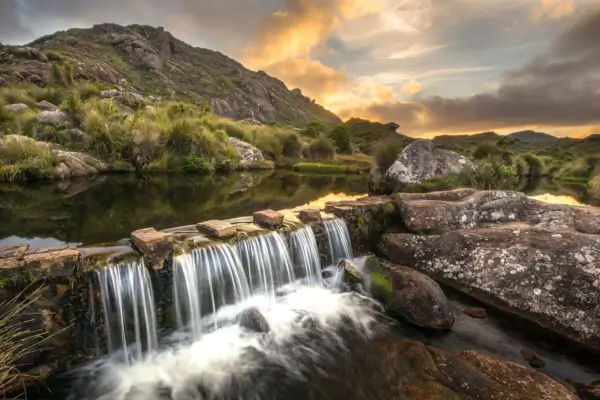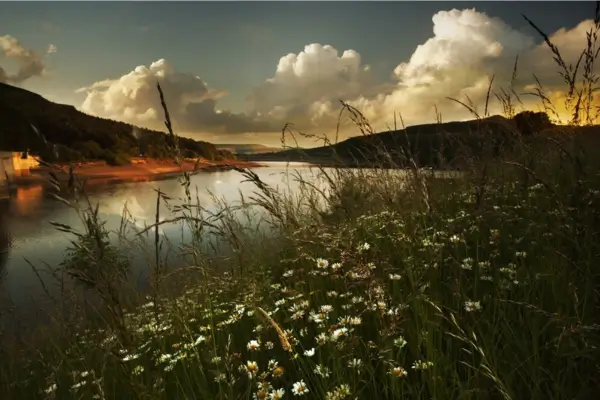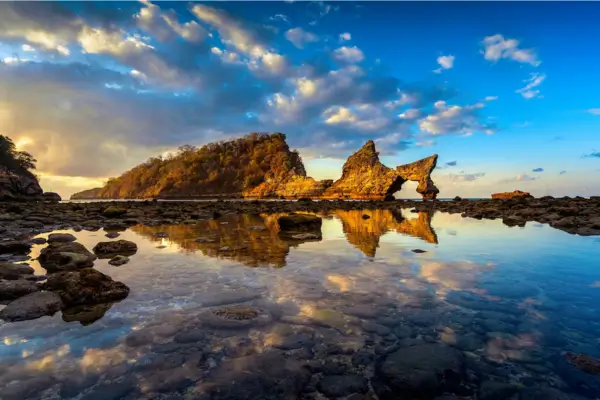Landscape photography captures the beauty of nature, but even the most stunning shots can benefit from a little post-processing. Editing allows photographers to enhance the colors, balance the exposure, and bring out the details that may not be fully visible straight out of the camera. However, the key to effective landscape photo editing is maintaining a natural and realistic look—avoiding over-processing that makes the scene appear artificial.
In this guide, we’ll walk you through the essential steps to edit landscape photos while preserving their authenticity. From basic exposure adjustments to advanced techniques like selective edits and noise reduction, you’ll learn how to make your images more vibrant and visually appealing without losing their natural charm. Whether you’re a beginner or an experienced photographer, these tips will help you refine your editing skills and create breathtaking landscape shots.
Choosing the Right Editing Software
Editing is a crucial part of landscape photography, and selecting the right software can make a significant difference in achieving a stunning yet natural look. With various options available, it’s essential to choose a tool that aligns with your skill level, editing style, and workflow needs.
Popular Editing Software for Landscape Photography
✅ Adobe Lightroom – One of the most popular choices among photographers, Lightroom offers a user-friendly interface, powerful RAW processing, and excellent tools for color correction, exposure adjustments, and non-destructive editing. It’s ideal for photographers who want an efficient workflow with professional-grade results.
✅ Adobe Photoshop – Best for those who need advanced editing capabilities. Photoshop allows for in-depth retouching, sky replacement, focus stacking, and detailed adjustments using layers and masks. It’s a great choice for photographers who want full control over their edits.
✅ Luminar Neo – Known for its AI-powered editing tools, Luminar makes complex edits easy with features like sky replacement, structure enhancement, and smart contrast adjustments. It’s perfect for those who want quick yet professional-looking enhancements.
✅ Capture One – Preferred by professionals, Capture One offers exceptional color grading and tethering capabilities. It provides more precise control over RAW image processing, making it a solid choice for photographers who want a highly customizable editing experience.
✅ ON1 Photo RAW – A versatile alternative that combines photo organization, RAW editing, and AI-powered tools in one platform. It’s a great choice for those looking for an all-in-one editing solution without a subscription.
Why Choosing the Right Tool Matters
The software you choose will shape the way you edit your landscape photos and influence the final outcome. Here’s why selecting the right tool is crucial:
- Efficiency & Workflow – Some software, like Lightroom, offers a seamless workflow for organizing and batch-editing photos, while others, like Photoshop, provide more detailed manual editing options.
- Editing Capabilities – If you prefer quick AI enhancements, tools like Luminar can be a time-saver. If you want complete creative control, Photoshop might be the best fit.
- Learning Curve – Some software has a steeper learning curve than others. Lightroom and Luminar are more beginner-friendly, while Photoshop and Capture One require more time to master.
- Final Results – The right software ensures that your edits enhance your landscape photos without making them look overly processed or artificial.
Ultimately, the best editing software depends on your personal preferences, skill level, and the type of edits you want to achieve. No matter which tool you choose, the key to stunning landscape photography lies in enhancing the natural beauty of the scene while maintaining a balanced and realistic look.

Basic Adjustments for a Natural Look
When editing landscape photos, the goal is to enhance the natural beauty of the scene without making it look artificial. The first step in achieving this is through basic adjustments, which lay the foundation for a well-balanced and visually appealing image.
Exposure, Contrast, and Brightness Balance
Exposure refers to the overall lightness or darkness of an image. If your photo is too dark (underexposed) or too bright (overexposed), adjusting the exposure slider in your editing software can help bring it to a more natural level. Be careful not to overdo it, as excessive exposure correction can lead to loss of detail.
Contrast controls the difference between the darkest and lightest areas of your image. Increasing contrast can add depth and make the scene more dynamic, while lowering it can create a softer, more muted effect. For landscapes, a moderate contrast boost often enhances the image without making it look unnatural.
Brightness affects the overall light intensity in your photo. Instead of relying too much on the brightness slider, it’s better to fine-tune exposure, highlights, and shadows for a more balanced look.
Adjusting Highlights and Shadows to Recover Details
Many landscape photos have areas that are too bright (highlights) or too dark (shadows), which can cause a loss of detail. Adjusting these elements separately allows for a more natural balance:
- Lowering highlights helps bring back details in the sky and bright areas, preventing overexposure.
- Increasing shadows recovers details in darker areas, like shaded forests or mountain valleys.
The key is to make subtle adjustments, avoiding extreme corrections that can create an unnatural, HDR-like effect.
Correcting White Balance for Accurate Colors
White balance ensures that the colors in your image appear natural and true to life. If your photo has an unwanted color cast (too warm or too cool), adjusting the white balance can correct it. Most editing software provides sliders for temperature (warm/cool tones) and tint (green/magenta balance):
- A warmer tone (yellow/orange) can enhance golden hour shots.
- A cooler tone (blue) works well for snowy or overcast scenes.
Using the eyedropper tool to select a neutral gray area in the image can also help achieve accurate colors. Proper white balance correction makes landscapes look more realistic and visually pleasing.
By mastering these basic adjustments, you create a strong foundation for more advanced edits while maintaining the natural beauty of your landscape photos.
Enhancing Colors Without Over-Saturation
Color is one of the most powerful elements in landscape photography. It can set the mood, highlight key details, and create a sense of depth. However, over-editing can lead to unnatural results, making the image look artificial. The key to achieving a stunning yet realistic look lies in using HSL (Hue, Saturation, Luminance) adjustments carefully.
Using HSL Sliders for Subtle Color Control
The HSL panel in most editing software (such as Lightroom and Photoshop) allows you to fine-tune colors by adjusting:
- Hue: Alters the actual color tone. For example, you can shift greens to a warmer yellowish tone or a deeper, cooler green.
- Saturation: Controls how intense a color appears. Reducing saturation slightly can help avoid unnatural vibrancy.
- Luminance: Adjusts the brightness of a specific color. Increasing luminance in blues, for instance, can create a softer sky without affecting other elements.
By making small, precise changes in the HSL panel, you can enhance the natural beauty of a landscape without overdoing it.
Enhancing Greens and Blues for a Vibrant Yet Realistic Look
Landscapes often feature dominant greens (trees, grass) and blues (sky, water). To enhance these colors naturally:
- For greens: Slightly reduce yellow in the Hue slider to make foliage look richer. Increase luminance to brighten leaves without making them look neon.
- For blues: Shift the Hue towards a slightly deeper tone for a more dramatic sky. Adjust saturation carefully—too much can create an unnatural, oversaturated effect.
A great trick is to compare before-and-after versions frequently to ensure the edits remain balanced.
Avoiding Artificial-Looking Oversaturation
Oversaturation is a common mistake that can make a landscape photo look unrealistic. To keep edits natural:
- Use targeted adjustments instead of global saturation increases.
- Avoid pushing colors too far—if it looks overly intense, dial it back.
- Work with color contrast rather than just boosting saturation. For example, increasing the brightness of greens instead of their saturation can make a landscape pop more naturally.
By following these techniques, you can create vibrant, well-balanced landscape photos that look breathtaking—without appearing exaggerated.

Improving Sharpness and Clarity: How to Sharpen Details Without Introducing Noise
When it comes to enhancing photos, sharpening is one of the most important techniques. It emphasizes the details and adds a crispness that makes an image come to life. However, this process can be tricky—too much sharpening can introduce noise, making the image appear grainy and less polished. The key is to strike the right balance between enhanced sharpness and maintaining a smooth, clean appearance.
Understanding Sharpness and Clarity Adjustments
Sharpness is the fine-tuning of the edges within an image, making them more defined. It’s what allows the viewer to see intricate details, like the texture of a surface or the subtle contrast between elements. Clarity, on the other hand, often refers to mid-tone contrast adjustments. It brings out more texture and depth in an image without drastically affecting the highlights or shadows.
While sharpness targets the edges and fine details, clarity impacts the overall texture of the image, enhancing its three-dimensionality. Both play a crucial role in creating a visually compelling and dynamic image, but the challenge lies in enhancing them without introducing unwanted noise.
How to Sharpen Without Creating Noise
- Use Selective Sharpening: Instead of applying sharpening to the entire image, focus on areas that need enhancement, such as the subject or points of interest. This helps maintain a natural look without affecting the smooth background or areas that may amplify noise.
- Adjust Radius and Threshold Carefully: In sharpening tools, the radius determines how much surrounding pixels are affected by the sharpening, while the threshold controls how much difference there should be between pixels before sharpening occurs. A smaller radius and higher threshold can help minimize noise in flatter areas.
- Apply Clarity Gradually: Adjusting clarity enhances texture, but doing it too drastically can make the image appear overly sharp and introduce artifacts. Gradually increase clarity in small increments to maintain a natural look.
- Use Noise Reduction Tools: After sharpening, use noise reduction features to smooth out any grain that may have appeared. This can help preserve the detail without losing sharpness.
- Smart Use of Layering: In more advanced editing, creating separate layers for sharpening and noise reduction can give you more control. Apply sharpening on one layer, then use noise reduction on another to refine the final image.
Incorporating these techniques ensures that you can sharpen details and enhance clarity without sacrificing the quality of your image. A well-sharpened image has definition and vibrancy, yet still feels smooth and natural.
Using Graduated and Radial Filters for Depth: Adding Subtle Enhancements to the Sky and Foreground
Creating depth in an image can transform a flat scene into one with dimension and interest. One effective way to achieve this is by using graduated and radial filters. These tools allow you to make local adjustments to specific areas of the image, such as the sky or the foreground, without affecting the entire scene. By enhancing certain elements, you can direct the viewer’s attention where you want it and add a sense of balance and depth.
Graduated Filters: Enhancing the Sky and Beyond
Graduated filters are most commonly used to adjust the exposure, contrast, or color of the sky in landscape photography, but they can be applied to any area that requires a gradual transition between adjustments. A graduated filter gradually changes from one setting to another, typically from the top to the bottom of the frame, making it perfect for balancing bright skies with darker foregrounds.
For example, if you have a bright sky that overwhelms the rest of the image, a graduated filter can darken it while leaving the foreground untouched. This subtle change creates a more balanced exposure, drawing the viewer’s attention to the lower half of the scene without making the sky appear unnatural.
Radial Filters: Adding Focus to the Foreground
Radial filters, on the other hand, are perfect for adding emphasis to a particular subject or area within the frame. These filters affect the area inside a circular or elliptical selection, with the strength of the effect gradually decreasing as it moves outward. Radial filters are commonly used to highlight key subjects, such as a person or a landmark, while softly blurring the surroundings or reducing exposure in certain areas.
Using a radial filter on the foreground can enhance textures or bring out details in a specific area, while applying it to the sky can draw attention to the clouds or subtle color gradients. This technique helps to subtly direct the viewer’s eye and creates an engaging focal point in the image.
Directing the Viewer’s Eye with Local Adjustments
The beauty of using graduated and radial filters lies in their ability to help guide the viewer’s eye to where you want it. By subtly enhancing certain parts of the image—whether it’s darkening the sky to emphasize the landscape or brightening the foreground to highlight a subject—you can control the narrative of the scene.
It’s important to use these filters thoughtfully and subtly. Overusing them can create unnatural transitions or distract from the main elements of the image. Instead, use graduated and radial filters to enhance natural light and draw attention to the areas of the image that matter most.
These filters are a powerful way to add depth, drama, and focus to your images. By making these local adjustments, you can craft a more engaging visual experience and guide your audience through the scene, creating a stronger connection to the subject and enhancing the overall impact of your photography.
Reducing Noise Without Losing Detail: Best Practices for Noise Reduction
One of the most common challenges in photo editing is reducing noise while preserving fine details. Noise can appear as grainy, speckled patterns in an image, particularly in low-light conditions or when using high ISO settings. While noise reduction techniques can smooth out these unwanted distractions, the challenge is to do so without sacrificing important details or sharpness.
Achieving this balance requires a delicate approach, as overly aggressive noise reduction can lead to a loss of texture and clarity. Here are some best practices to help you reduce noise while keeping your image crisp and clean.
Best Practices for Noise Reduction
- Use Selective Noise Reduction
Instead of applying noise reduction to the entire image, target specific areas that are most affected by noise, such as the shadows or smooth background areas. Selective noise reduction allows you to preserve fine details in important regions, like the subject or areas with textures, while reducing noise where it’s most noticeable. - Adjust the Luminance and Color Noise Separately
Noise typically comes in two forms: luminance (brightness) noise and color (chrominance) noise. Luminance noise manifests as grainy patches of light and dark pixels, while color noise creates distracting colored speckles. Most editing software allows you to adjust these separately. By reducing color noise first and then gently addressing luminance noise, you can maintain the overall texture of the image without over-softening it. - Use Noise Reduction in Moderation
When using noise reduction tools, avoid applying heavy amounts that can blur fine details. Instead, apply a subtle amount of reduction and evaluate the results frequently. Often, just a small adjustment is enough to achieve the desired effect without compromising sharpness. - Apply Noise Reduction in Layers
For more control over your image, use layers to apply noise reduction to different parts of the photo. For example, you can apply a stronger reduction to the smooth, noisy sky and a lighter reduction to the detailed foreground. This way, you preserve the texture in important areas while cleaning up noisy sections. - Preserve Details with Sharpening After Noise Reduction
After noise reduction, it’s common for images to appear softer. To counteract this, apply a small amount of sharpening after noise reduction. Be cautious, though—too much sharpening can reintroduce noise. The key is to balance sharpening with the noise reduction to maintain the sharpness of important details without bringing back unwanted grain. - Use High-Quality Noise Reduction Software
Investing in high-quality noise reduction software can make a noticeable difference. Programs like DxO PureRAW, Topaz DeNoise, or Adobe Lightroom offer advanced algorithms designed to reduce noise without sacrificing detail. These tools can help preserve fine textures while offering smooth, noise-free results.
Balancing Noise Reduction and Sharpness for a Crisp, Clean Image
The goal is to create an image that looks clean and polished without losing the intricate details that make it unique. After reducing noise, always take a step back and evaluate the overall balance between smoothness and sharpness. Too much noise reduction can make an image appear overly soft and unnatural, while too little can leave distracting grain. The key is subtlety—gradually reducing noise and selectively enhancing sharpness to preserve the natural texture and clarity of your photo.
By following these best practices, you can successfully reduce noise and maintain a crisp, clean image that retains the fine details and sharpness that make your photography stand out.

Final Touches and Exporting
Before finalizing your image, take a moment to refine the composition. Cropping can enhance the visual impact by eliminating distractions and improving framing. Adjusting the composition ensures that the focal point remains strong and well-balanced.
Next, choose the appropriate format and resolution for your intended use. For online sharing, JPEG or PNG formats work well, with resolutions optimized for web display. If you’re preparing for print, consider using TIFF or PDF formats with higher resolutions (300 DPI or more) to maintain image quality.
Taking these final steps ensures your work is polished and ready to be shared or printed with the best possible quality.
Conclusion
Mastering the art of landscape photo editing takes time and practice, but the journey is well worth it. We’ve covered key techniques such as adjusting exposure, enhancing colors, and refining composition to bring out the best in your shots.
As you continue experimenting, remember that editing is a personal and creative process. Developing your own style will make your photos truly unique.
We’d love to see your work! Share your edited landscape photos in the comments or ask any questions you have. Let’s keep learning and growing together!
